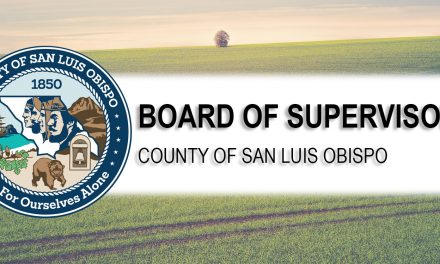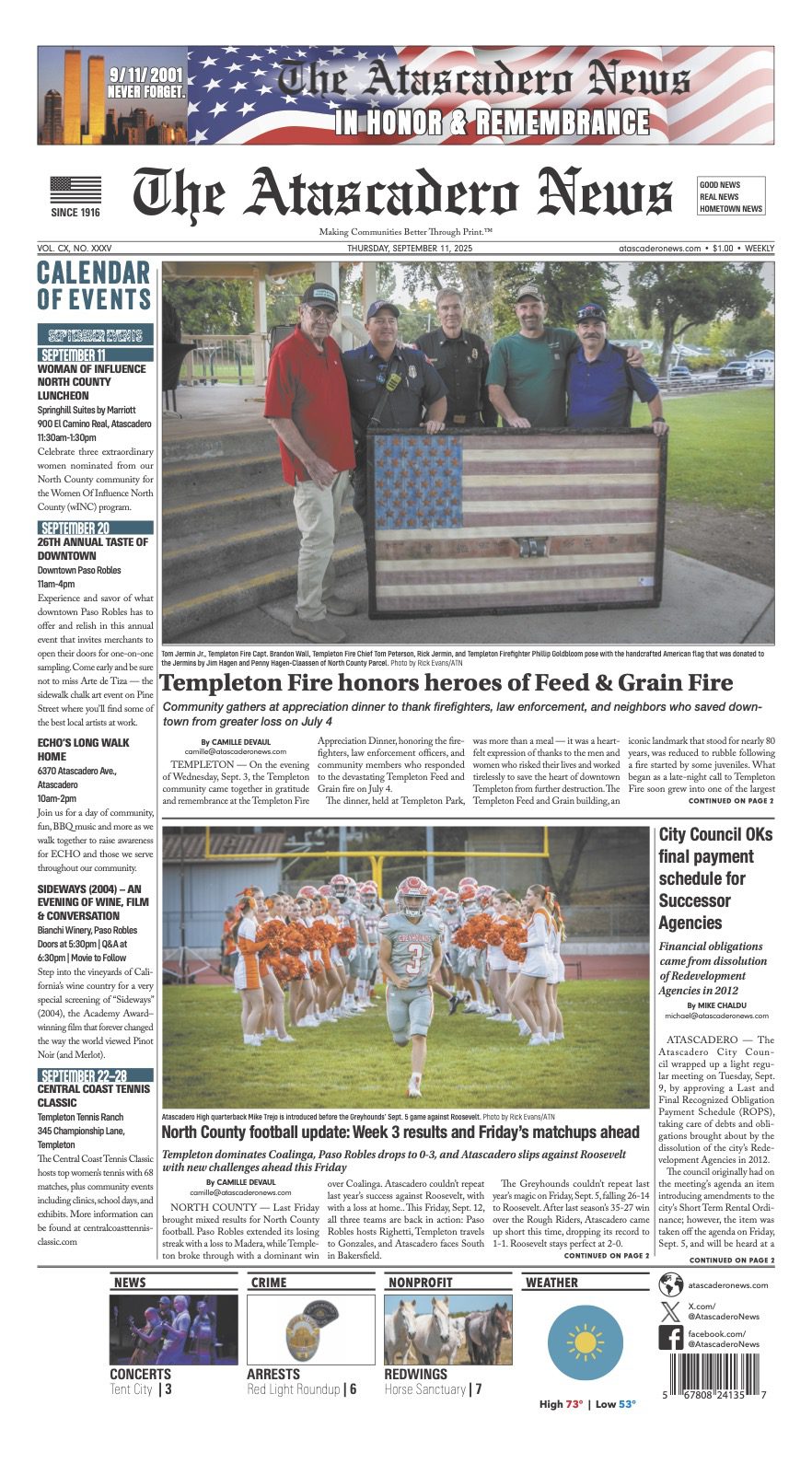American Rescue Plan funding, drought update also discussed at Tuesday meeting
SAN LUIS OBISPO COUNTY — The San Luis Obispo County Board Supervisors met for its regularly scheduled meeting on Tuesday morning, March 15.
The meeting began with the consent agenda (Items 1-25), which came with some public comments, mostly from the supporters of the Bridge Café at the new Government Center in San Luis Obispo. Item 14 was a request for capital improvements for the café.
Also, District 3 Supervisor Dawn Ortiz-Legg commented on Item 9, congratulating Dr. Rene Bravo for being named Citizen of the Year by the San Luis Obispo Chamber of Commerce; and District 2 Supervisor Bruce Gibson acknowledged the appointment of Leslie Santos as District 2 representative for the Civil Service Commission (Item 13).
After Ortiz-Legg pulled Item 8 from consent, the rest of the agenda passed by a 5-0 vote.
Ortiz-Legg pulled Item 8 for a separate vote to acknowledge Kassandra Dee for her appointment to the Commission on the Status of Women and Girls.
The board passed Item 8 separately by a 5-0 vote.
The next three items (26-28) were resolutions read by board members.
District 1 Supervisor John Peschong read the resolution honoring Debbie Soto for 30 years working in the County counsel office. County counsel Rita Neal commented to the board afterward that Soto “is the County Counsel’s office.”
Gibson read the resolution proclaiming April 2022 as “Month of the Child” and “Child Abuse Prevention Month.” Ortiz-Legg then read the resolution proclaiming March 2022 as American Red Cross Month.
All three resolutions passed by 5-0 votes.
Item 30 was brought before the board to approve the funding plan for the American Rescue Plan Act small business and child care grants, including $500,000 in ARPA funds to go towards the COVID-19 Small Business Grant Program and $3 million for child care projects to the County Office of Education.
County Economic Development Manager Laura Fiedler said the small business grants are eligible to small businesses all across the county, with those of 10 employees or fewer eligible for $5,000 grants and those with 11-25 employees eligible for $10,000 payouts. The grants, meant to mitigate the effects of the COVID-19 pandemic, are available until April 30.
For the child-care grants, Fiedler said a consortium of child-care organizations has been formed to manage the the distribution of the $3 million in funds through 2024.
After the presentation, Ortiz-Legg moved to accept the funding plan, saying the money “is a change agent for our economy,” and the board passed the motion 5-0.
For Item 31, the board heard the 60-day update on the county’s drought conditions and the possible direction of staff to develop a contract with the Central Coast Water Authority to transfer state water.
Anita Konopa of the County Office of Emergency Services said the county is currently in moderate drought status, expected to continue through May, with the area moving into extreme drought status by the end of the summer.
Kate Valentine with Public Works then informed the board the department is working on a transfer opportunity with the Central Coast Water Authority. The staff recommended a one-time transfer of 1,000 AF of stored water to CCWA for 1,000 AF of capacity to address drought conditions.
After a question from Compton, Valentine explained that the trade with CCWA was a case of the county “trading wet water [to the CCWA] for the ability to move more water into our county.”
In public comment, alternative ideas were introduced. Jeff Edwards suggested a longer-term deal with CCWA that would open up access to Table A water and more capacity; Lindy Owen advocated the use of composting toilets and recycling of water; and Becky McFarland of Los Osos said there needs to be a moratorium on new builds in her area because of the scant access to water.
Compton moved to approve the update and direct staff to develop the deal with CCWA. The motion passed by a 5-0 vote.
Next, Item 32 was a hearing to receive and file a 3-year review of the county’s Inclusionary Housing Ordinance and provide staff direction.
Airlin Singewald of the County Planning and Building Department made a presentation on the ordinance. Singewald pointed out part of the ordinance was the requirement for subdivisions that 8 percent of the residences need to be affordable housing.
Singewald touched on the 2019 update that was now up for review. One of the components of that was a tiered fee (up to $7 per square foot for new homes) that would be a big issue in later discussion. He mentioned three options for the board: Retaining the current IHO, retaining the IHO, and finding alternative (broad-based) funding options, or repeal components of or the entire IHO.
In public comment, speakers representing the home building industry criticized the updated in-lieu fees, which they called unfair and ineffective.
Atascadero developer Max Zappas spoke out on the IMO.
“Charging extra fees to homebuilders to support other homebuilders is discriminatory, unfair and counterintuitive,” he said. “If we asked firefighters to pay a fee for the fires they put out, how would they react?”
Meanwhile, Lindy Hatcher, executive director of the Homebuilders Association of the Central Coast talked about the “missing middle” of residents who are having trouble buying homes.
“I’m talking about the housing you provide for your nurses, firemen, policemen,” Hatcher said when asked by Gibson to define the term. “You’ll have no middle class living here if these fees continue.”
Gibson then asked for more “quantitative” criteria for the “missing middle.” Zappas said median income would be a good measure for that, while District 5 Supervisor Debbie Arnold said that a 2,200-square-foot home would probably be the standard for that category.
After public comment, Peschong made the motion to direct the Planning and Building staff to repeal the IHO. Gibson opposed the repeal, saying he would be in favor of it if there was an alternative, but he didn’t want to support a new policy direction without quantitative criteria.
The motion passed 4-1 with Gibson dissenting.
Item 33, the final one of the day, was a resolution implementing increased vehicle registration fees to sustain the CAL ID program.
SLO County Sheriff’s Chief Deputy of Investigation Aaron Nix spoke and explained that the Sheriff’s Office was the steward of the program, and in 2014, a doubling of the vehicle license fee to fund CAL ID to $2 for passenger vehicles and $4 for commercial vehicles was passed by Assembly, but the sheriff committed to not implementing the increase until there was a considerable need.
Nix said the Sheriff is going to be short about $207,000 for this fiscal year, so the time for the increase is now. The motion passed quickly by a 5-0 vote.
















